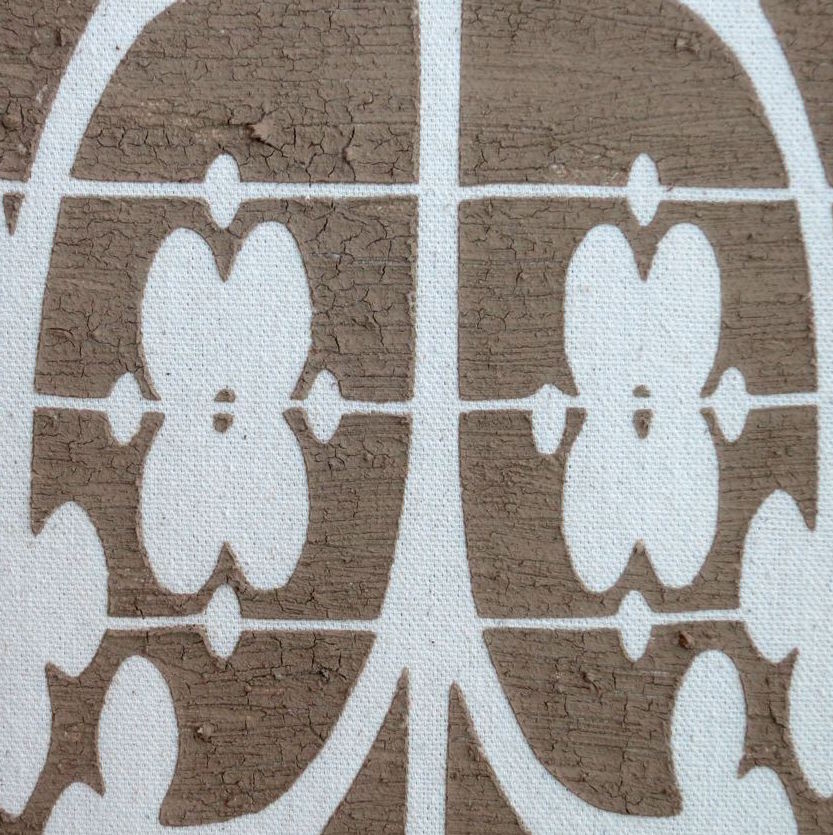As part of the exploration of drawing in glass and ceramics, the National Glass Center (Sunderland UK, 10 October, 2015 – 13 March, 2016) is showing Robert Dawson: Pattern Play, new work by this artist who often uses ceramics to reflect upon the history of pattern making in the decorative arts. Patterned surfaces are usually associated with utilitarian ceramics rather than fine art and this adds a twist to the paintings and their identity.
Above: Robert Dawson, 250915 (detail), 2015, clay on canvas

A. W. N. Pugin designer, maker Minton & Co. c 1847/50 for the Palace of Westminster. Photograph courtesy of the Victoria and Albert Museum, London.
The exhibition centers around a single tile image by the architect and designer Augustus Welby Pugin (c.1847). He was an English architect, designer, artist, and critic, chiefly remembered for his pioneering role in the Gothic revival style; his work culminated in the interior design of the Palace of Westminster (also known as the Houses of Parliament), for which this tile was made.

National Glass Center (Sunderland UK, 17 October, 2015 –13 March, 2016), “Robert Dawson: Pattern Play.” Click to see a larger image.
Robert Dawson plays with the perception of definitions between applied art and fine art by using clay slip across stretched canvas. Here, reworked patterns have often been disrupted in various ways. One source of inspiration for this work has been Ernst Gombrich’s The Sense of Order.

National Glass Center (Sunderland UK, 17 October, 2015 – 13 March, 2016) is showing “Robert Dawson: Pattern Play.” Click to see a larger image.

Robert Dawson, 300815, 2015, clay on canvas
Gombrich talks about the “redundant” in communication, including aural and visual communication. As the artist explains, “one looks around and out there is the expected (the redundant) which we don’t need to bother to follow, unlike the unexpected. We focus on the unexpected. There’s a row of Victorian terraced houses. They are all the same as each other. Therefore we don’t need to look at each one. Then suddenly there’s one on which someone has stuck some imitation-stone cladding. We look at that one because it is a violation of expectation.”

On right: Robert Dawson, 150715, 2015, clay on canvas
Dawson likes to seek this balance in his work, “between the expected and the unexpected. The designer is always looking for a place between boredom and confusion.”
He welcomes the limitations of the virtual and physical technologies employed, and any errors that these devices introduce are welcomed. They play a large part in the resulting look of the work, as well as influencing the initial plans for each piece. Lack of control is in constant conflict (the artist prefers the term “play”) with precise design. After working so much with paint over the years, “I’m finding I’m preferring the qualities of the clay. And I am using clay for this reason, as well as because of my imagery coming from Pugin’s designs for ceramics.”
Garth Clark is the Chief Editor of cfile.
Love contemporary ceramic art + design? Let us know in the comments.











Add your valued opinion to this post.